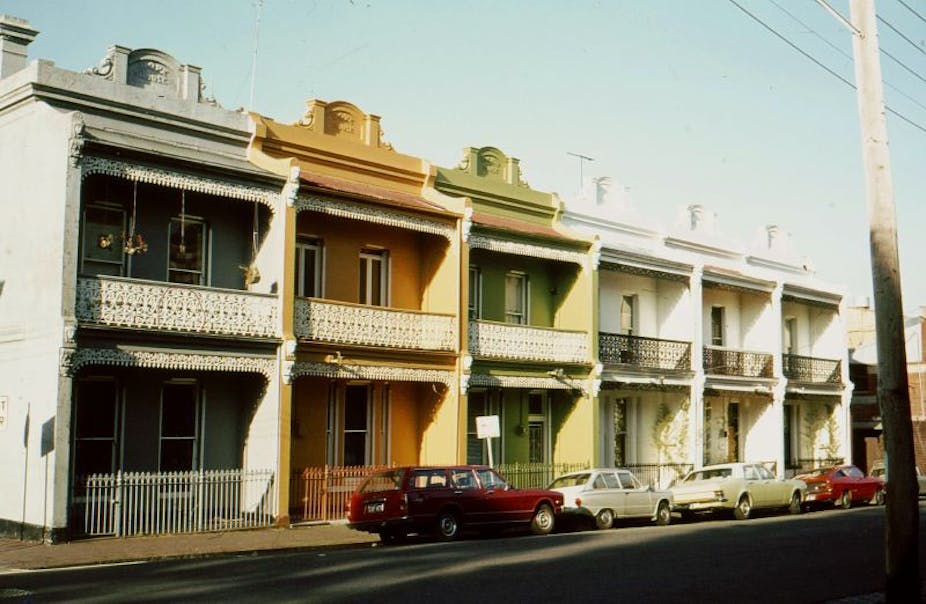This will be the century of urbanisation, when seven billion of almost 10 billion people will live in urban settlements.
In Australia our urban sprawl is consuming land at a per capita rate that few countries can rival. Developers have been handed the task of planning our future, and are cutting a swathe through urban amenity.
Amenity will be the basis of economic success this century, yet we are condemning ourselves to inhabit the most alienating of worlds.
The alternative? Well-planned urban densification.
Goodbye to the backyard - a new way of living
Many researchers predicted that Australians would never accept urban intensification. But widespread multi-unit construction is occurring in every Australian city and regional centre.
Sydney is Australia’s most compact city.
Multi-unit dwellings in Melbourne increased by over 700% in the ten years from 1991. They accounted for 40% of all residential development. Over 12,000 multi-unit dwellings were built in Melbourne’s inner and middle ring suburbs in 2010.
While inner and middle ring suburbs become denser, outer suburbs sprawl. State governments simultaneously seek to intensify inner urban areas and build low density outer suburbs.
One city for the wealthy, one for the poor
Australian cities are being redeveloped into two co-existing city types.
Higher income, tertiary educated, professionally employed households are concentrated mainly in relatively dense, service rich inner and middle ring suburbs. Lower income households without tertiary qualifications are located primarily in low density, service-poor outer urban areas.
Density, therefore, is at the centre of urban division in Australia. In new outer suburbs, relatively uniform housing and a rigid separation of uses add to car dependency.
Transport is commonly the second highest cost for low income outer urban households. In coming decades, Australian society will reap social division, environmental impacts and infrastructure costs from the world’s worst urban design in these outer urban areas.
At the same time, Australian inner areas are growing upwards. For decades, Sydney has epitomised the use of residential towers. Perth has shown that substantial increases in urban densities can be achieved through two-to-four story attached townhouses and apartments.

Are we aiming too low on density?
Australian cities traditionally have been regarded as about as dense as American cities, at 10-18 persons/ha, although American per capita vehicle fuel use is far higher.
European cities have been regarded as 2-6 times as dense as Australian cities, and Asian cities 4-30 times as dense.
Melbourne’s density has been accepted generally as about 15 persons/ha and Sydney’s as about 20 persons/ha. These figures are often debated and depend partially on the areas of cities defined as urban.
Most states are aiming for 15 dwellings/ha for new housing in the outer suburbs. This is a rise of 50% from 15 years ago.
However, this is still well below the 25 dwellings/ha in the UK, 45 in Germany, or even the fringes of many American cities with their widespread use of townhouses and attached row houses.
Australian State metropolitan plans seek to accommodate between 40-70% of all new housing within existing urban boundaries. They hope to do this at infill sites and mixed-use activity centres, and through dispersed development.
However, most states have reneged on these commitments by extending their outer urban growth boundaries, fatally weakening their plans and undermining consolidation intentions.
We should plan for the future, not for the developers
A common reason for these trends is state planning governance. Planning systems are usually deregulatory: they’re intended to make development easier.
For example, Victoria is moving to copy Queensland, which uses guidelines to approve apartment blocks (in Victoria’s case up to 10 units) without the need for permits. Ironically, New South Wales, which has led the way in liberalising planning is now likely to increase local control.
Governments liberalise rules so developers can deliver on urban consolidation policy.
This approach has worked but has costs. Destroying the heritage of established suburbs removes the amenity which attracts entrepreneurial and creative thinking. Congestion has resulted from poor planning.
The alternative is for governments to identify suitable sites for intensification, and develop rules for their use. Generally, governments have preferred to use planning systems to transfer decisions about type and location of intensified housing to development companies.
In forsaking planning, we are determined to fail.
Deregulation rewards short term speculation. But city planners need to anticipate a world where far-flung suburbs are difficult to inhabit.
Australia urgently needs to consider alternatives to outer urban sprawl and inner urban high rise development. Alternatives are not part of the policy discussion. It is time they were.

